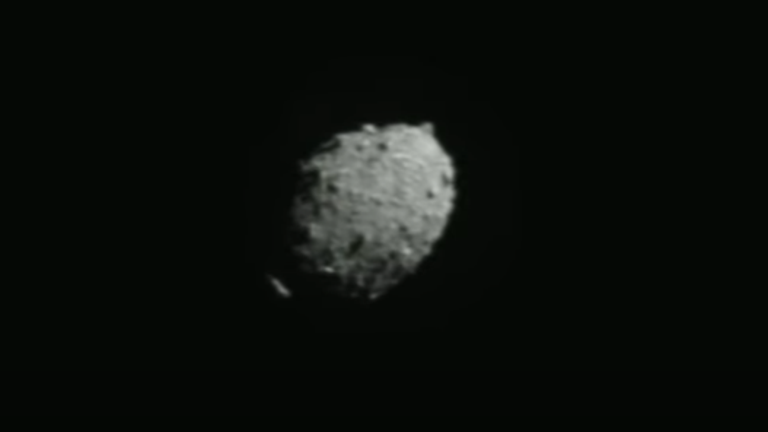A spacecraft that deliberately crashed into an asteroid last month has successfully diverted its orbit, NASA said.
Telescope observations show that the Sept. 26 suicide test flight of the Double Asteroid Redirection Test (Dart) spacecraft achieved its primary goal: changing the trajectory of an asteroid.
NASA attempted the first test of its kind to see if it could push objects away from Earth in the future.
Its success marks the first time humans have altered the motion of such an object.
“This is a watershed moment for planetary defense and a watershed moment for humanity,” said NASA Administrator Bill Nelson.
“This mission shows that NASA is working hard to prepare for whatever the universe throws at us.”
The Dart probe plunged into the egg-shaped asteroid Dimorphos as part of the first test of the Planetary Defense System.
The spacecraft carved a crater on the asteroid, flinging debris into space, creating a comet-like trail of dust and rubble that stretched thousands of miles.
An image released by NASA shows the Dimorphos asteroid after the Dart spacecraft hit.
The space agency said that with the new data, astronomers will be better able to assess whether and how future missions like Dart might be used if we find an asteroid heading our way.
Telescope observations will take days to determine how much the impact altered the 525-foot (160-meter) asteroid’s path around its companion, a larger space rock.
read more:
The moment a NASA spacecraft crashed into an asteroid
A vending machine-sized dart launched last year was destroyed when it struck an asteroid 7 million miles (11 million kilometers) away at 14,000 miles (22,500 kilometers) per hour.
The $330m (£300m) mission, which took seven years to develop, targets an asteroid roughly the size of a football field that orbits its parent asteroid Didymos about five times its size every 11 hours and 55 minutes.
After the space agency revealed the news, U.S. Vice President Kamala Harris took to Twitter to congratulate the team.

